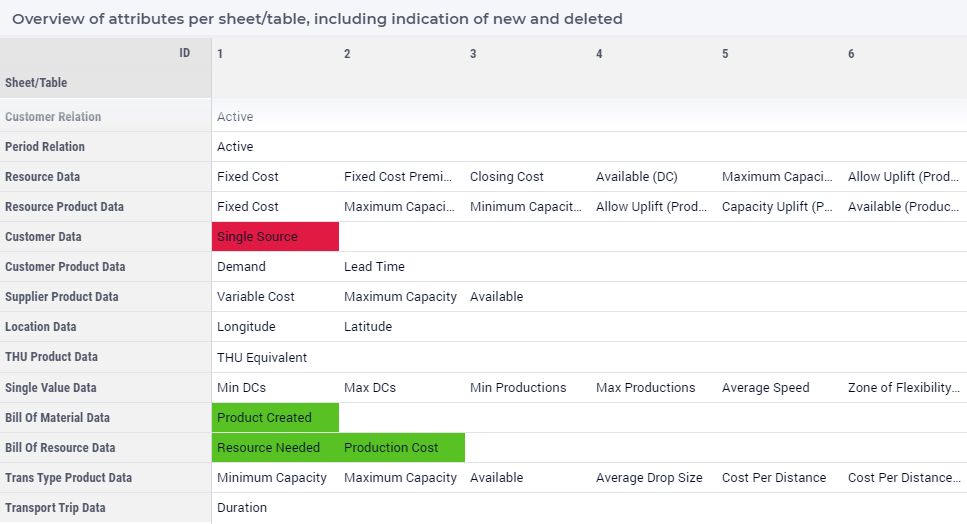Generate Template
On this page, you can generate an Excel Data Template, that contains all the tables and attributes needed for the selected Configuration. The name which can be found in the status bar, lower right corner of the page.
At the top of the page, there are three action widgets:

Click the Play icon  in the first widget to download a Excel file. This create a template for the Dataset Type selected in the third widget. You will use this template to import your data into SC Navigator. When you have filled it out, continue to Import Dataset so that you can upload and save your data to the database.
in the first widget to download a Excel file. This create a template for the Dataset Type selected in the third widget. You will use this template to import your data into SC Navigator. When you have filled it out, continue to Import Dataset so that you can upload and save your data to the database.
If your are not uploading your data via Excel, but you are setting up a direct database write to the SC Navigator Database, you need to check the switch next to Direct Database Write. This will give you a one page overview more suitable for database integration.
Overview of attributes
This table contains an overview of all the attributes that are present in the various Excel sheets, including an indication if this is a new (green) or deleted (red) attribute.

If you create or update a configuration, differences are marked in the new configuration compared to the previously loaded configuration: added attributes are green, deleted attributes are red.
If you only want to see the changes, click the the blue icon in the top right corner of the widget and select “Show changed attributes” from the menu.
If you create a new configuration when no configuration was previously loaded, all attributes will be marked as new.
Structure of template
The first sheet is called Notes. This provides a table of contents for all the data attribute fields in the template, and links to the corresponding sheets where they are found.
Other sheets are for data input. These sheets generally follow the same structure, with a few variations:
Data - Sheets requiring both elements and attributes
Definition and Relation - Sheets defining elements
Single Value Data - Sheets identifying attributes
Filling in the template
You may need to collect data from different sources. Once you have the required data, you’ll need to find the proper place and format for it in the template.

SC Navigator Excel Template
Data Sheets
In the top row are bold column headings (here, columns A through D) describing elements to be specified. These usually come in sets. For any row, these act in combination to identify a single data point. You could think of these like coordinates. For example, you need to specify who, what, when, and where (element coordinates) before you specify how many (attribute value).
In the next columns (here, columns E and F) are headings for the attributes required as data values for the given combination.
To the side (here, in columns H and I) there are notes to describe the attributes in more detail.
Definition and Relation Sheets
Some sheets are for you to enter sets of data and show their relationship to each other. Here you can define what elements should be grouped together.
Single Value Data Sheets
Single Value Data and Single Value String Data are sheets where the attributes are not dependent on a combination of elements from sets, but are a single value. Single Value String Data asks for input as a label (which one) and Single Value Data asks for input as a numerical value (how many).
Data only needs to be entered in Column B for each attribute listed in column A.